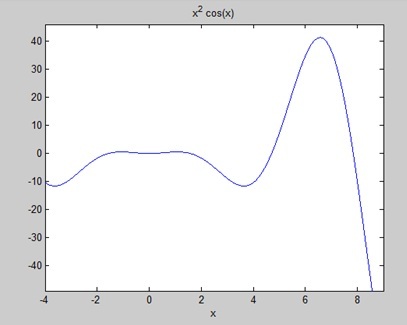

- GNU OCTAVE PROGRAMMING EXAMPLES HOW TO
- GNU OCTAVE PROGRAMMING EXAMPLES FULL
- GNU OCTAVE PROGRAMMING EXAMPLES CODE
- GNU OCTAVE PROGRAMMING EXAMPLES FREE
GNU OCTAVE PROGRAMMING EXAMPLES CODE
It is an interpreted language therefore, the source code is read and evaluated by a program that executes the instructions. Python is a general-purpose programming language that is among the most popular languages in use today (as evidenced by findings from the TIOBE index, RedMonk Programming Language Rankings, Popularity of Programming Language Index, State of the Octoverse of GitHub, and other sources). This task will use only the first set (i.e., the first two columns). The data file is a text file with tabs as column separators and a few lines as a header. This is a set of artificially constructed data that gives the same results when fitted with a straight line, but their plots are very different. The example data is the first set of Anscombe's quartet, shown in the table below. This is a common situation that many data scientists have encountered.
GNU OCTAVE PROGRAMMING EXAMPLES FULL
The full examples are available in the polyglot_fit repository. It is not intended to be an exhaustive comparison of the languages, just a little showcase.Īll of the programs are meant to be run on the command line, not with a graphical user interface (GUI).

GNU OCTAVE PROGRAMMING EXAMPLES HOW TO
To that ends, I will explain how to write a program in Python and GNU Octave for a particular task you could classify as data science. If you are already familiar with one of the languages, start with that one and go through the others to look for similarities and differences. To get a feeling for a new programming language (and its documentation), I always start by writing some example programs that perform a task I know well.

Discovering new programming styles let me backport some solutions to other languages, and everything became much more interesting. I later studied some other languages, and each one brought some new bit of enlightenment. However, I soon realized that each language was more suitable than others for some applications. Programs became much slower, but I did not have to suffer through writing analysis software. Then a friend suggested I try Python, and life became much easier.
GNU OCTAVE PROGRAMMING EXAMPLES FREE
Life was hard and dangerous in those years, as I had to manually allocate memory, manage pointers, and remember to free memory. When I started programming, the only language I knew was C. Why? It is mostly a combination of boredom with the old ways and curiosity about the new ways. Choosing Python and GNU Octave for data scienceĮvery so often, I try to learn a new programming language. Some are well-known for solving problems in this space, while others are lesser-known. This article will help you become familiar with doing data science with some popular languages.


 0 kommentar(er)
0 kommentar(er)
